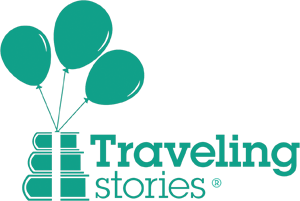How Do Children Learn to Read?
How Do Children Learn to Read?
Part 1 of a series
By Emily Moberly
Science says that unlike speech, reading doesn’t just happen naturally. You have to be taught.
Did you know that for hundreds of years people have disagreed over how to teach children reading? These arguments got so heated that people started calling them “The Reading Wars.”
In the 1800s, teachers on one side of the debate argued for a phonics-based approach. Teachers on the other side believed that children learn to read through exposure to good books and a love of reading (Blevins, 2017). This eventually turned into the “phonics” approach and the “whole language” approach. Both were taught widely.
Later, in the 1960s, a man named Ken Goodman introduced a new method called 3-Cueing. It’s the idea that you teach children to use cues to figure out the meaning of the text. By the 1980s, 3-cueing had been adopted as the reading instruction method of choice by many schools across the U.S.
3-Cues
Graphic Cues - what do you see in the picture?
Syntactic cues - what kind of word could it be? Noun or verb?
Semantic cues - what word makes sense here?
Most of us have probably experienced the 3-cue method first-hand. In an article titled, “At a Loss for Words,” the author Emily Hanford gives this example of 3-cueing in practice:
A class reads a book together called "In the Garden." On each page, there's a picture of something you might find in a garden. It's what's known as a predictable book; the sentences are all the same except for the last word.
The children have been taught to memorize the words "look," "at," and "the." The challenge is getting the last word in the sentence. The lesson plan tells the teacher to cover up the word with a sticky note.
The teacher tells the kids that she's guessing the word is going to be caterpillar. She uncovers the word to check on the accuracy of her guess.
"Look at that," she tells the children, pointing to the first letter of the word. "It starts with the /c/ /c/ /c/." The class reads the sentence together as the teacher points to the words. "Look at the caterpillar!" they yell out excitedly.
According to the lesson plan, this lesson teaches children to "know and apply grade-level phonics and word analysis skills in decoding words."(1). However, children were NOT taught to decode words in this lesson. They were taught to guess words using pictures and patterns — hallmarks of the three-cueing system.
That’s not reading.
There’s a Better Way
In the last 50 years, scientists from different disciplines have done extensive research on how our brains learn to read. We’re starting to refer to their findings as the “science of reading.”
The science of reading research says that students learn to read best when the reading instruction method includes these components:
Phonemic awareness - the ability to articulate and manipulate individual speech sounds
Phonics - the relationship between letters and sounds
Vocabulary - the knowledge or words, including their structure, use, meanings, and links to other words
Fluency - ability to read with speed, accuracy, and proper expression
Comprehension - ability to understand the meaning of what you read.
This was further supported in 2020 when the National Reading Panel published a report that outlined which instructional methods were most effective in teaching reading. Their methods mirrored the ones listed by the science of reading.
Here at Traveling Stories, our goal is to empower children to achieve their dreams. We believe we can do that best by helping them grow their confidence and reading skills by the 4th grade.
And yet, every year, the United States adds over one million fourth grade students to the list of nonreaders (Gibbons, 2020).
People who cannot read are much more likely to be poor and unable to find a job. They are also more likely to be incarcerated (Gibbons, 2020). Not being able to read also impacts a person’s quality of life. Poor reading skills are linked to low self-esteem, depression, anxiety, school dropout rates, and even suicide (Gibbons, 2020).
The most recent National Assessment of Educational Progress (NAEP) report shows that “only about one in five African Americans and Hispanic 4th graders were reading at or above proficient levels” (Terry, 2021). The same NAEP report shows that one in two white students are reading at or above grade level (Terry, 2021).
The achievement gap is getting wider. We believe this is a critical issue that will eventually impact us all. We believe it’s a complicated issue that will require a multi-faceted solution.
We find inspiration in the story of Mississippi. In 2013, they ranked #49 in literacy. Now, just 10 years later, they rank #29.
Mississippi passed legislation that required all 3rd grade students to pass a reading proficiency test before they could move on to 4th grade. If they didn’t pass they were retained and provided extensive reading support. Mississippi also invested heavily in professional development and emphasized training based in the science of reading.
Traveling Stories wants to contribute meaningfully to the issue of childhood literacy. We want to help as many kids as possible develop confidence, strong reading skills, and a love for reading. We believe that gaining a better understanding of the science of reading will help us do that more effectively.
Over the next few weeks we’ll publish a series of blogs that explores the science of reading in more detail and share resources we’ve come across. We invite you to comment or message us your questions and comments! This doesn’t have to be a one-sided conversation.
For our programs, we hope to find a way to incorporate the science of reading into our weekly one-on-one sessions.
For parents, we hope to provide more resources that will make you feel equipped to effectively advocate for your child at school.


